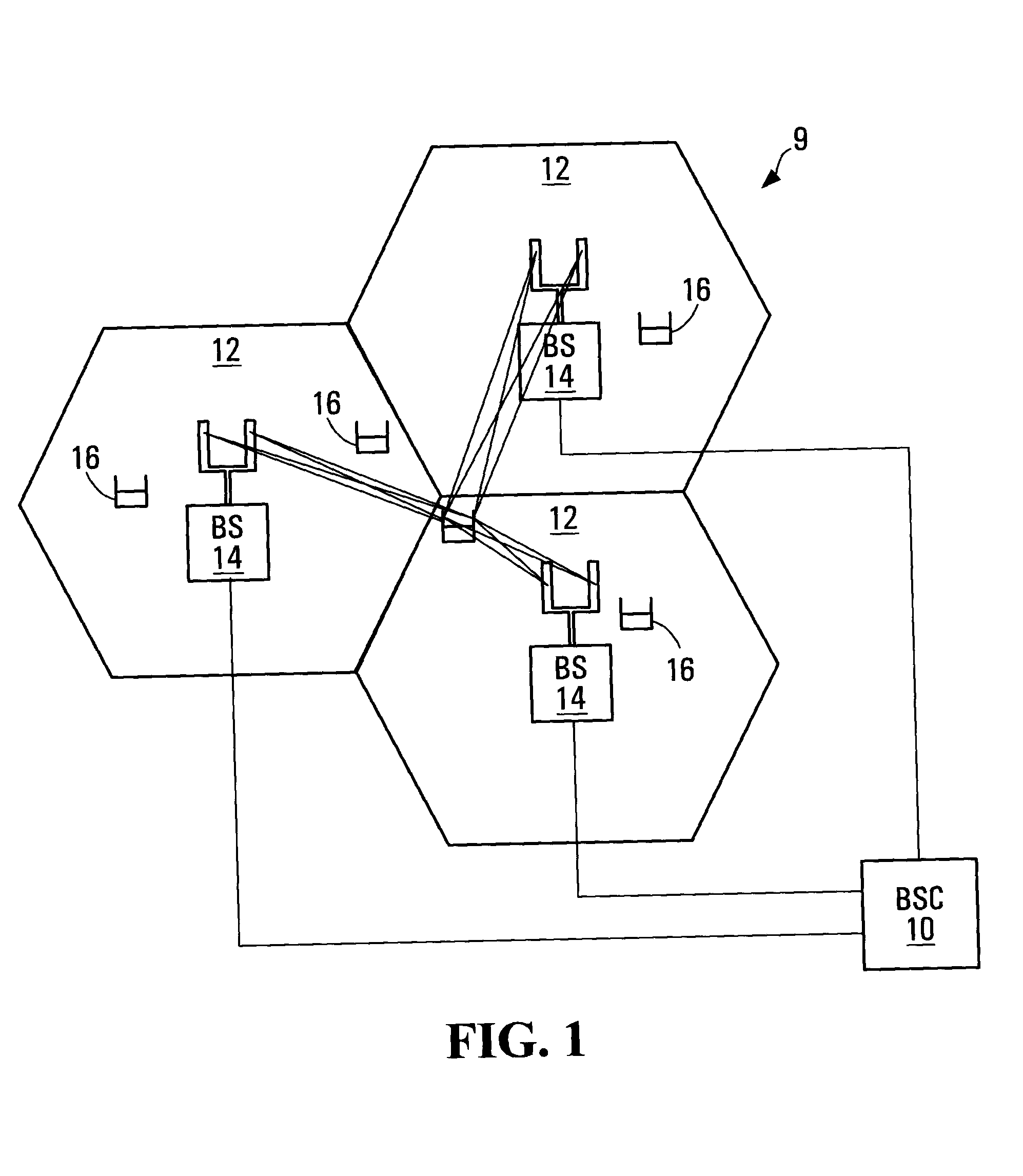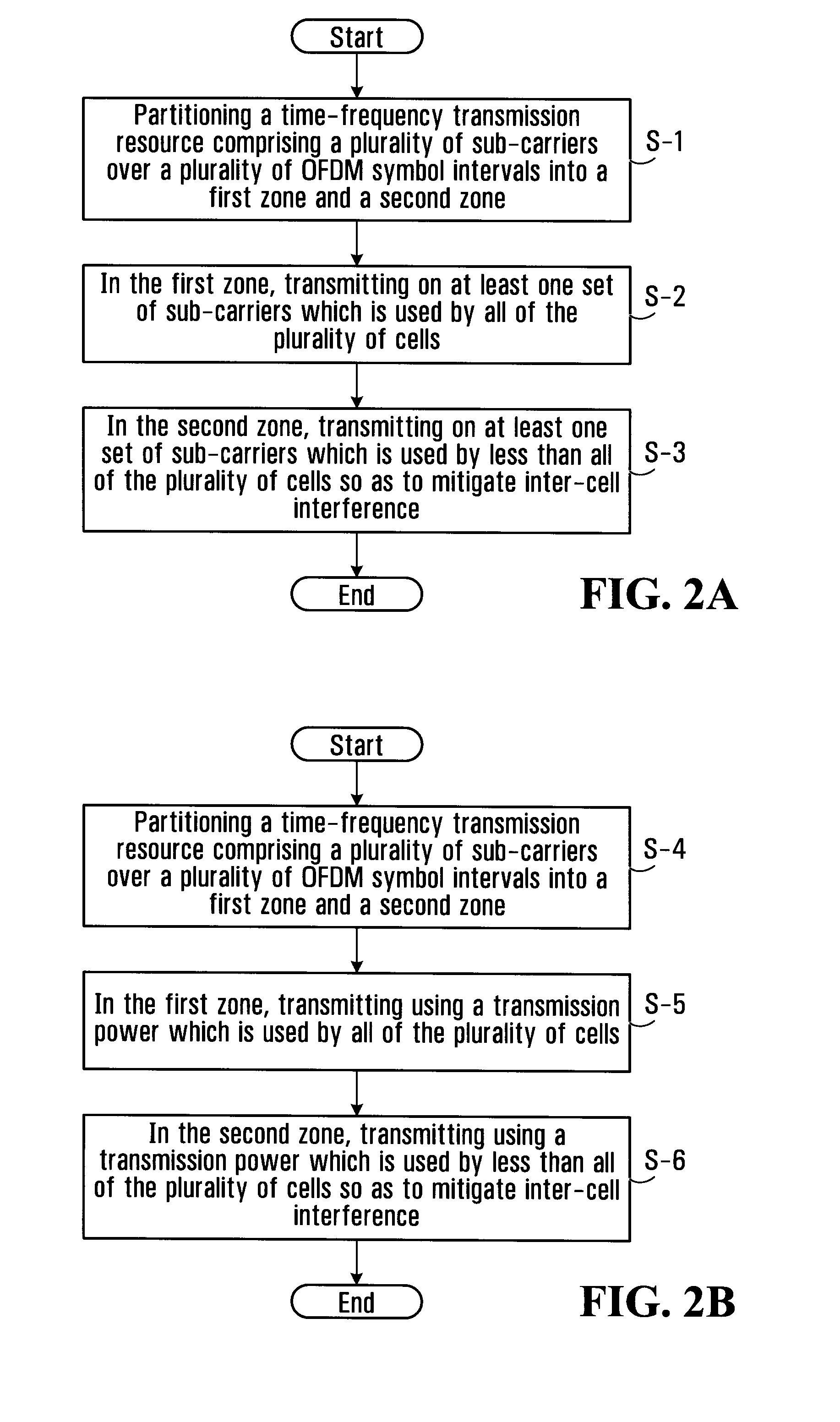Methods and systems to mitigate inter-cell interference
a technology of inter-cell interference and mitigation methods, applied in the field of wireless communication, can solve the problems of reducing network capacity, performance degradation, and difficulty in suppressing inter-cell interference to improve coverage, and achieve the effect of reducing inter-cell interferen
- Summary
- Abstract
- Description
- Claims
- Application Information
AI Technical Summary
Benefits of technology
Problems solved by technology
Method used
Image
Examples
Embodiment Construction
[0060]FIG. 1 illustrates an example of a communications environment 9 having three cells 12. FIG. 1 shows a base station controller (BSC) 10 that controls wireless communications within the three cells 12, in which each cell is served by a respective base station (BS) 14. In general, each respective base station 14 facilitates communication using OFDM with mobile and / or wireless terminals 16, which are within the cell 12 associated with the respective base station 14. The movement of the mobile terminals 16 in relation to the base stations 14 results in significant fluctuation in channel conditions. As illustrated, the base stations 14 and wireless terminals 16 may include multiple antennas to provide spatial diversity for communications.
[0061]In some implementations a wireless terminal 16 is a wireless device such as a cellular telephone, computer with a wireless modem, or PDA. In some implementations the wireless terminal has a fixed location. In other implementations the wireless...
PUM
 Login to View More
Login to View More Abstract
Description
Claims
Application Information
 Login to View More
Login to View More - R&D
- Intellectual Property
- Life Sciences
- Materials
- Tech Scout
- Unparalleled Data Quality
- Higher Quality Content
- 60% Fewer Hallucinations
Browse by: Latest US Patents, China's latest patents, Technical Efficacy Thesaurus, Application Domain, Technology Topic, Popular Technical Reports.
© 2025 PatSnap. All rights reserved.Legal|Privacy policy|Modern Slavery Act Transparency Statement|Sitemap|About US| Contact US: help@patsnap.com



